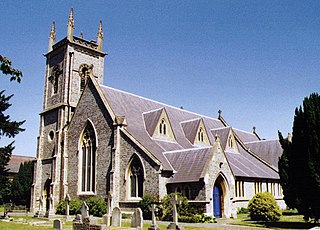
Earley is a town and civil parish in the Borough of Wokingham, Berkshire, England. Along with the neighbouring town of Woodley, the Office for National Statistics places Earley within the Reading/Wokingham Urban Area; for the purposes of local government it falls within the Borough of Wokingham, outside the area of Reading Borough Council. Its name is sometimes spelt Erleigh or Erlegh and consists of a number of smaller areas, including Maiden Erlegh and Lower Earley, and lies some 3 miles (5 km) south and east of the centre of Reading, and some 4 miles (6 km) northwest of Wokingham. It had a population of 32,036 at the 2011 Census.
Edgbaston is a suburb of Birmingham, West Midlands, England. It lies immediately south-west of Birmingham city centre, and was historically in Warwickshire. The wards of Edgbaston and North Edgbaston had a combined population of 42,295 at the 2021 census.

The Birmingham Botanical Gardens are a 15-acre (6-hectare) botanical garden situated in Edgbaston, Birmingham, England. The gardens are located 1+1⁄2 miles (2.4 km) south-west of Birmingham city centre at grid reference SP049854. Designed in 1829, the gardens are Grade II* listed in Historic Englands's Register of Parks and Gardens, and retain many original features and layout, which was designed by the landscape gardener and horticulturalist John Claudius Loudon. The site is notable for its range of glasshouses and gardens, which display a wide variety of plants and birds. Birmingham Botanical Gardens is managed by Birmingham Botanical and Horticultural Society, a registered charity. The gardens are open daily to the public with paid admission.

Although Birmingham in England has existed as a settlement for over a thousand years, today's city is overwhelmingly a product of the 18th, 19th, and 20th centuries, with little surviving from its early history. As it has expanded, it has acquired a variety of architectural styles. Buildings of most modern architectural styles in the United Kingdom are located in Birmingham. In recent years, Birmingham was one of the first cities to exhibit the blobitecture style with the construction of the Selfridges store at the Bullring Shopping Centre.
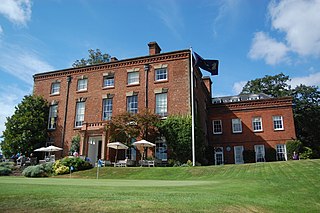
Edgbaston Hall is a country house in the Edgbaston area of Birmingham, England.

Holland William Hobbiss, was an English architect in the Birmingham area. He traded under the names Holland W. Hobbiss and Partners and Holland W. Hobbiss and M. A. H. Hobbiss.

Winterbourne Botanic Garden is a heritage site and botanic garden in Edgbaston, Birmingham, England. It is owned by the University of Birmingham.

Edgbaston Pool is a Site of Special Scientific Interest located in Edgbaston, Birmingham, England. It is one of 23 SSSI's in the West Midlands. The site has two distinct units (areas) within it. The first is water-related and contains the 7 hectares lake and the input channel of the Chad Brook as well as some land that is either marsh or lake depending on the season. The second, the smaller section is woodland. In total the site measures 15.93 hectares.

21 Yateley Road, Edgbaston, Birmingham, England is a house built in 1899. It was designed by Herbert Tudor Buckland as his own home, and built by his partnership, Buckland & Haywood-Farmer, which constructed some of the best housing in the Birmingham suburbs in the early 20th century. The architectural style is Arts and Crafts and the house is a Grade I listed building.

Brandwood End Cemetery is a cemetery located in the Brandwood ward of Birmingham, England.

Hill Close Gardens is a group of 18 surviving Victorian detached gardens on a hillside in Warwick, Warwickshire, England. It is listed Grade II* in Historic England's Register of Parks and Gardens.
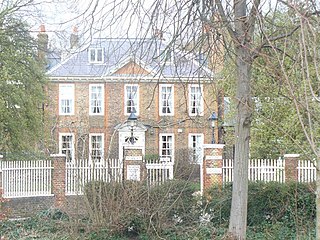
Douglas House is a Grade II* listed early 18th-century Queen Anne-style house in Petersham in the London Borough of Richmond upon Thames. It is now the site of the German School London.
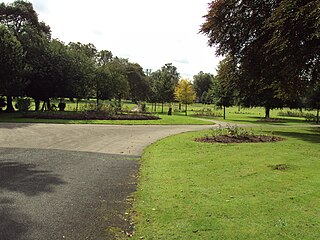
Calthorpe Park is a public park in Birmingham, England, created in 1857 and managed by Birmingham City Council.

The Chad Brook is a stream, or brook, wholly within Birmingham, England. It rises in the district of Harborne, giving its name to the area known as Chad Valley, and runs through the suburb of Edgbaston.

Charles Edge was a British architect based in Birmingham.
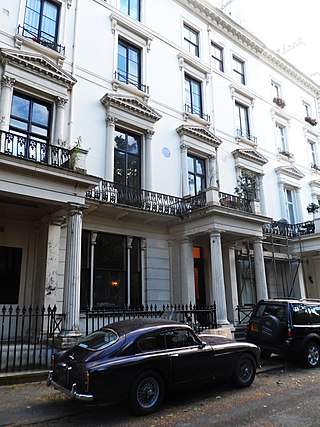
Westbourne Terrace is a street in the Paddington district of the City of Westminster in west London. The street runs between Westbourne Bridge in the north and the junction of Westbourne Crescent and Sussex Gardens in the south and was developed between 1839 and the late 1850s. It has been described as the "most spacious and dignified avenue" in Bayswater and "unrivalled in its class in London or even Great Britain". The street is not to be confused with Westbourne Terrace Road which runs north from Westbourne Bridge into Little Venice, and a large number of other Westbourne streets in the area.

Stoney Road Allotments consists of 123 council-owned allotments covering around 5 hectares just south of Coventry city centre. They were created in the mid 19th century as pleasure-gardens for the people of the city, and were Grade II* listed in 2001.

The Homestead, 25 Woodbourne Road, Edgbaston, Birmingham, England is a house built in 1897. It was designed by Charles Bateman, and built by James Smith & Son. The architectural style is Arts and Crafts and the house is a Grade I listed building. The garden wall and gate piers facing Woodbourne Road have a separate Grade I listing. The Homestead remains a private residence.
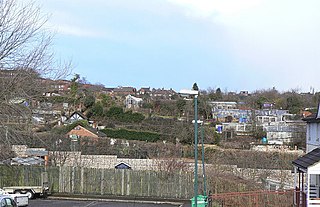
St Ann's Allotments is a group of allotments, in use since the 19th century, in St Ann's, Nottingham, England, about a mile north-east of the centre of Nottingham. It is listed Grade II* in Historic England's Register of Parks and Gardens. The entry listing remarks that this site, comprising Hungerhill Gardens, Stonepit Coppice Gardens and Gorseyclose Gardens, "represents the most extensive surviving detached town garden site in England".
Bagthorpe Gardens is a group of allotments, about 1.8 miles (2.9 km) north-east of the centre of Nottingham. It is listed Grade II* in Historic England's Register of Parks and Gardens. The entry listing remarks that the allotments are "a significant surviving example of a once abundant but now extremely rare type of garden, of which there are only four other registered examples".


















